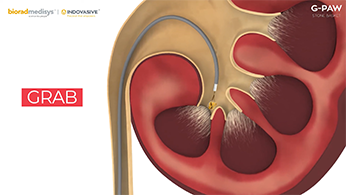Hip pain can be a debilitating condition that significantly impacts one’s quality of life. For many individuals, this pain may become so severe that it interferes with daily activities and restricts movement. In such cases, hip replacement surgery emerges as a transformative solution, offering relief and a chance to regain mobility. In this blog, we will delve into the causes of hip pain leading to hip replacement surgery, the precautions necessary post-surgery, and the overall impact on an individual’s life.
- Osteoarthritis: Hip pain is often caused by osteoarthritis, especially in older adults. Wear and tear on the protective cartilage that cushions the ends of bones causes this degenerative joint disease. As the cartilage diminishes, bones begin to rub against each other, causing pain, stiffness, and reduced mobility. In severe cases, osteoarthritis can lead to the need for hip replacement surgery.
- Rheumatoid Arthritis: The joint is primarily affected by rheumatoid arthritis, which is an autoimmune disease. In the case of the hip joint, the synovial membrane becomes inflamed, leading to pain, swelling, and eventual damage to the joint. When conservative treatments fail to provide relief, hip replacement surgery may be recommended to restore functionality and alleviate pain.
- Hip Fractures: Traumatic injuries, such as hip fractures, can result in significant hip pain. Fractures may occur due to falls, accidents, or other injuries, and they can compromise the structural integrity of the hip joint. In cases where fractures cannot be effectively treated with conservative methods, hip replacement surgery may be necessary to repair and reconstruct the damaged joint.
- Avascular Necrosis: Avascular necrosis, also known as osteonecrosis, is a condition where there is a loss of blood supply to the bone, leading to bone death. This can affect the hip joint and cause severe pain and deterioration of the joint. Hip replacement surgery becomes a viable option to restore blood flow and replace the damaged joint with an artificial one.
- Physical Therapy: Following hip replacement surgery, physical therapy plays a crucial role in the recovery process. Physical therapists design customized exercise programs to help patients regain strength, flexibility, and range of motion in the hip joint. These exercises also contribute to preventing muscle atrophy and enhancing overall mobility.
- Weight-Bearing Precautions: Patients are often advised to adhere to specific weight-bearing precautions during the initial stages of recovery. This may include using crutches or a walker to avoid putting excessive stress on the newly replaced hip. Adhering to these precautions is essential to prevent complications and ensure the proper integration of the artificial joint.
- Medication Management: In post-surgery care, pain management is essential. Patients are prescribed pain medications to alleviate discomfort and support the rehabilitation process. It is crucial to follow the prescribed medication regimen and communicate any concerns or side effects to the healthcare provider.
- Wound Care: Proper care of the surgical incision is essential to prevent infections and promote healing. Patients should keep the incision clean and dry, following the healthcare provider’s instructions for dressing changes. Any signs of infection, such as redness, swelling, or increased pain, should be promptly reported to the medical team.
- Gradual Return to Activities: While it is essential to engage in physical therapy and prescribed exercises, patients must gradually reintroduce daily activities. Overexertion or pushing oneself too hard can lead to complications. Following the recommended rehabilitation timeline ensures a steady and successful recovery.
- Lifestyle Modifications: Adopting lifestyle modifications can contribute to the long-term success of hip replacement surgery. Maintaining a healthy weight, engaging in low-impact exercises, and avoiding activities that put excessive strain on the hip joint can enhance the longevity of the artificial joint and minimize the risk of complications.
Conclusion
Hip replacement surgery is a transformative intervention for individuals suffering from debilitating hip pain. Whether caused by osteoarthritis, rheumatoid arthritis, hip fractures, or avascular necrosis, the surgery offers a chance to reclaim mobility and improve overall quality of life. However, the success of hip replacement surgery depends not only on the surgical procedure itself but also on the commitment to post-operative care and rehabilitation.
Following the recommended precautions, including physical therapy, weight-bearing limitations, medication management, wound care, and gradual return to activities, is crucial for a smooth recovery. Patients should actively participate in their rehabilitation process, working collaboratively with healthcare providers to achieve optimal outcomes.
In embracing these precautions and committing to a comprehensive post-surgery care plan, individuals can embark on a journey toward restored mobility and a pain-free life. Hip replacement surgery not only addresses the physical limitations imposed by hip conditions but also opens the door to a renewed sense of independence and well-being. As with any medical procedure, consulting with healthcare professionals and following their guidance is paramount to a successful recovery and the realization of the full benefits of hip replacement surgery.













Leave a comment